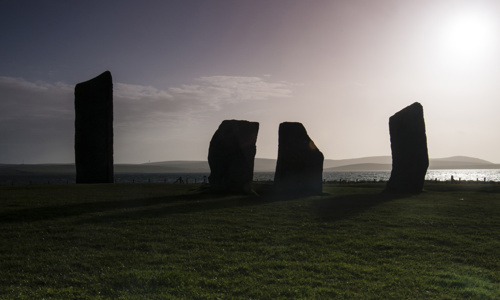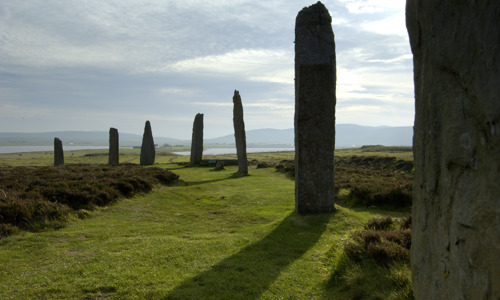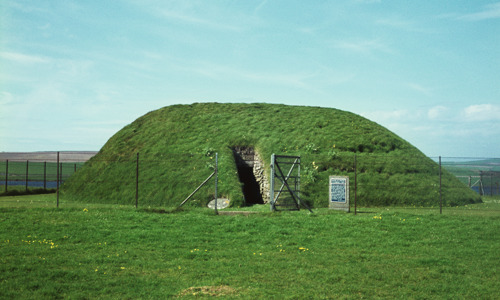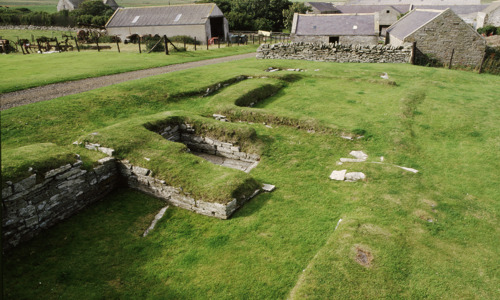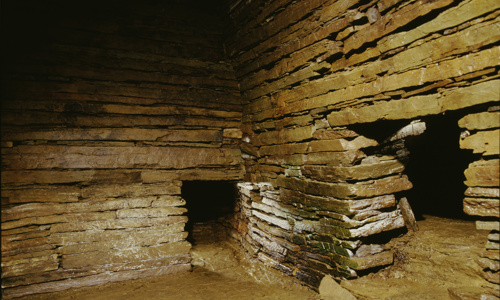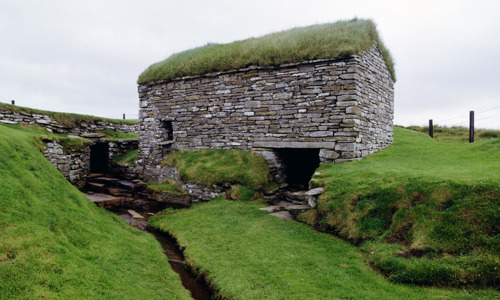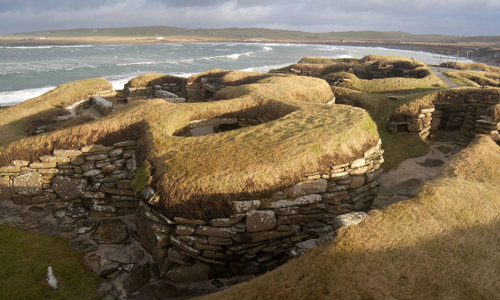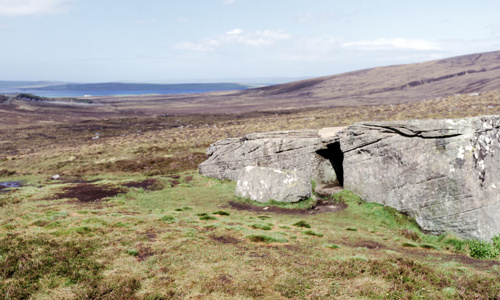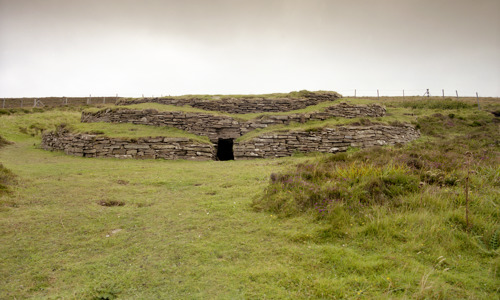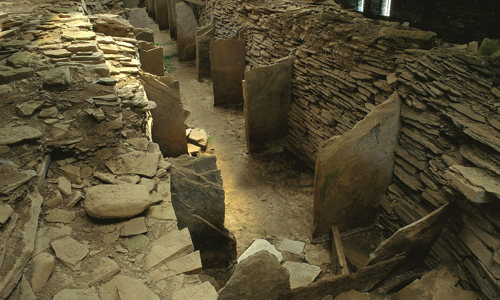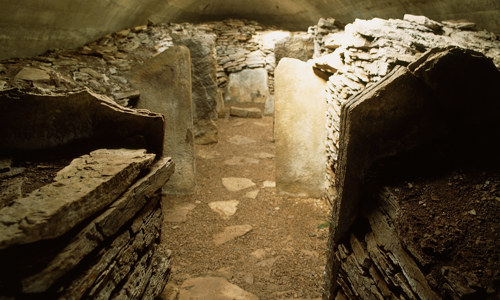History
Maeshowe, a monumental chambered tomb, is the finest Neolithic building to survive in north-west Europe. Built around 5,000 years ago, it is a masterpiece of Neolithic design and construction – not least because of its use of massive stones.
Creating such a huge building must have been a major challenge for our remote ancestors, working without metal tools or powered machinery. It also clearly shows a tremendous social commitment.
From the outside, Maeshowe looks just like a large grassy mound. (The word ‘howe’ comes from the Old Norse for ‘hill’.) To appreciate its size and significance, visitors must enter Maeshowe, stooping to walk its long passageway to reach the central, stone-built chamber. The outside world feels far away, with just a small glint of light entering the tomb.
Everything at Maeshowe was built on a grand scale:
- each wall of the 10m-long passage is formed mostly of a single, gigantic sandstone slab up to three tonnes in weight
- at each corner of the central chamber is a magnificent upright standing stone
- the floors, back walls and ceilings of the three side cells (off the central chamber) are each made of single stone slabs
A monumental landscape
Maeshowe sits in one of the richest Neolithic landscapes in Europe – a place of stone circles, villages and burial monuments, where people lived, worshipped, and honoured their dead.
Other incredible survivals from that far-off age include the:
Together the four monuments form the Heart of Neolithic Orkney World Heritage Site, inscribed on the World Heritage List in 1999.
Midwinter at Maeshowe
We know from the careful positioning of Maeshowe’s gently sloping passage that one time of year was particularly special for the people who used it.
For the three weeks before and after the winter solstice (the shortest day of the year) the light of the setting sun shines straight down the passage and illuminates the back of the central chamber. The sun’s rays align with the Barnhouse Stone, a standing stone south-west of Maeshowe.
Norse runes
It seems that Maeshowe was closed up for good after several hundred years of use as a burial tomb. Around 3,000 years passed before it was entered again, by Norsemen who broke into the mound, no doubt curious as to what lay within.
The Norse left a fascinating legacy: light-hearted runic graffiti carved all over Maeshowe’s walls. It’s the largest collection of runic inscriptions to survive outside Scandinavia – and a powerful reminder that Orkney was under Norwegian rule until 1469.


